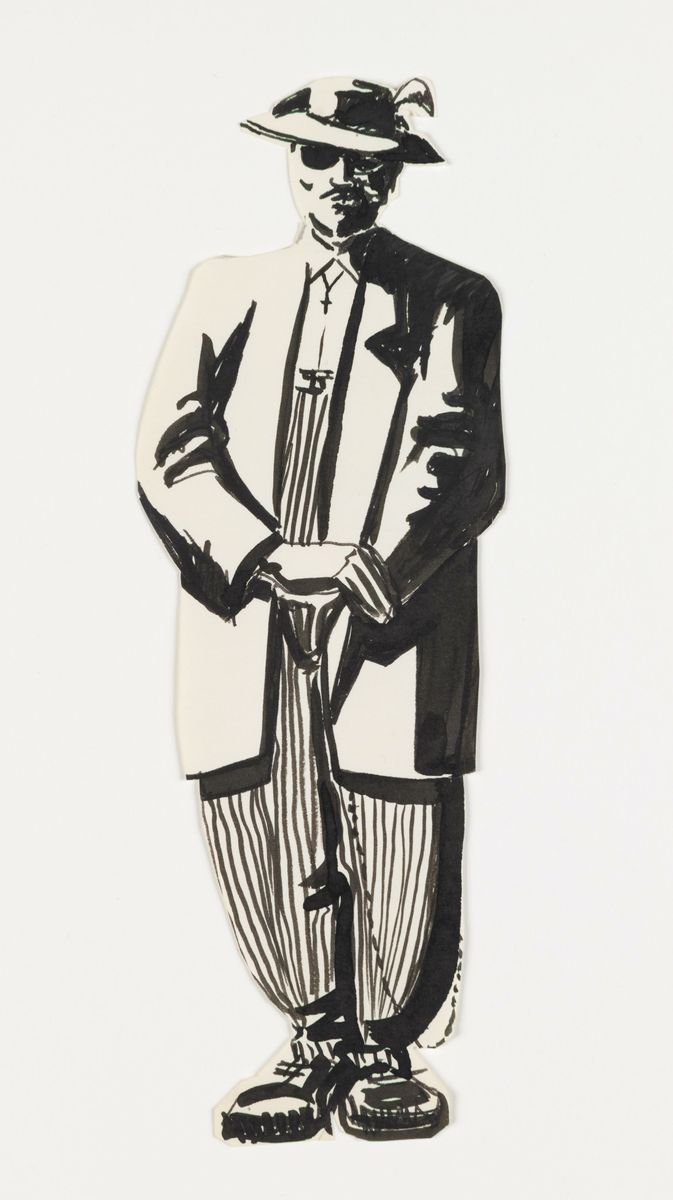Chicano Art: Jose Montoya’s Restless Abundance

*Montoya was the founder of the Royal Chicano Air Force, originally called the Rebel Chicano Art Front the acronym gave way to a name change and the locura that it engendered. He and his art collective were a powerful force in the Chicano art movement of the ’70’s. Diaz writes about an exhibit in Los Angeles that runs until July of 2017. It’s worth a read and worth visiting the Montoya art. VL
 By Eduardo Diaz, Director Smithsonian Latino Center (2.7 minute read)
By Eduardo Diaz, Director Smithsonian Latino Center (2.7 minute read)
The artist’s sacred trinity of life, struggle, and death is not a moralistic tale; it is a representation of the Chicano experience.
—Curator Selene Preciado, from the catalogue José Montoya’s Abundant Harvest: Works on Paper/Works on Life
The artist to whom Ms. Preciado refers is José Montoya (1932-2013), considered by many the dean of Chicano cultural workers. Preciado co-edited José Montoya’s Abundant Harvest: Works on Paper/Works on Life with Richard Montoya, playwright, filmmaker and son of the artist. The exhibition, a comprehensive survey that includes nearly 2,000 works, recently opened at UCLA’s Fowler Museum. I was privileged to attend the opening reception.
The reference to Preciado and Montoya as “co-editors” is intriguing given that we are talking about a museum exhibition. As I made my way through the gallery the term, editor, made abundant sense, for Montoya was not only a prolific visual artist, he was masterful poet and musician—the observant and loving chronicler of Chicano life. As Preciado notes, “For Montoya, the line and the word were interchangeable: his drawings were poetry; and his poems, drawings.” Through Montoya’s oeuvre, the exhibition closely examines the role that artists and poets played in the Chicano Movement. Abundant Harvest also includes a wall-mounted version of “Resonant Valley,” a classic poem that affords us a poignant glimpse into his early life as a farmworker in California’s central San Joaquín Valley, and a video featuring Montoya in an interview and performance.
I am a product of the Chicano Movement. José Montoya, who was a half-generation ahead of me, loomed large in the social, political and cultural orientation that informed my early intellectual upbringing. I was an undergraduate at San Diego State when Chicano Park sprung up in the city’s Logan Heights neighborhood in April 1970. José was part of the artist crew that executed the dramatic murals on the bridge support columns that dot the park. I can remember attending several music and poetry performances featuring José and his work. Later, as a law student at UC Davis, I attended exhibition openings and other programs organized by the irrepressible locura known as the Royal Chicano Air Force (RCAF), a Sacramento-based Chicano artist collective he helped found. Essentially, José Montoya epitomized the Chicano Renaissance.
The Fowler and the co-editors could not have done better in characterizing the exhibition as Abundant Harvest. The 2,000 drawings on view constitute only a portion of his prodigious body of work. José drew constantly, in sketchbooks, on napkins or scraps of paper; whatever was available. Employing a wicked economy of line, he produced complete and complex scenes and portraits, notably of thepachucos and pachucas, who he referred to as the first “freedom fighters” of the Chicano Movement. Also included in his works are zoot suiters, cholas andabuelitas, soldiers and sailors (Montoya served in the Korean War), and farmworkers and other working class folk—all rendered with deliberate tenderness.
The exhibition’s organizers chose an ingenuous approach to arrange the drawings. They curated nearly 100 individual boxes that evoke the grape trays used to hold the San Joaquín Valley’s harvest. They stand in long rows like grapes planted in a vineyard, allowing visitors to walk freely among them and view their contents. Four of the rows are also named for the cardinal directions that are at the core of many mestizo-indigenous religious practices. The center row consists of actual grape trays filled with drawings of his favorite pachucos and pachucas, a kind of altar to his beloved freedom fighters.
Abundant Harvest is a complete and moving experience, the kind of which I have rarely seen in any gallery, and one that really needs to be seen before it closes on July 17, 2016. I hope the Fowler is successful with its plans to travel the exhibition, as the Chicano Movement and the community that made and lived it should be recognized and celebrated by many more as a uniquely true American experience.
Eduardo Díaz is the director of the Smithsonian Latino Center and a 30-year veteran of arts administration. The Latino Center works to increase and enhance Latino presence, research and scholarship at the Smithsonian Institution by sponsoring, developing and promoting exhibitions, collections, research and public programs that focus on the Latino experience. Díaz is an advisor to the Smithsonian’s Secretary and Under Secretary for History, Art and Culture as well as to Congress and other government agencies on a range of cultural development issues related to Latino communities in the United States and their impact on diverse countries of origin.
[Image courtesy of the Montoya Family Trust]Suggested viewing
[cc_product sku=”ntchicanodvd” display=”inline” quantity=”true” price=”true”][cc_product sku=”ntchicanodvd-ins” display=”inline” quantity=”true” price=”true”]
